What Is Teen Drug Abuse?

Drug abuse, now also referred to as drug use disorder, refers to using substances, over-the-counter (OTC) medications, prescription drugs, or illegal street drugs for the purpose of getting high. Substance abuse can lead to significant, even life-threatening, health problems. It also increases the risk of accidents, suicide, unsafe sex, and violence.
Teens drug and alcohol abuse is common. Nearly half of American teens have used illicit drugs by the time they are in 12th grade. One in three has used alcohol in the past month. Teens are more likely to abuse substances if they suffer from depression, low self-esteem, low impulse control, have a history of being abused, or family history of substance abuse. Teens who receive low parental supervision or communication, or who feel different than their peers are also at risk for drug abuse.
Teen Drug Abuse: What Are the Statistics?

Alcohol, marijuana, and tobacco are the substances most commonly abused by teens.
- Almost 34% of high school seniors admit to drinking alcohol within the past month.
- Marijuana is also frequently abused by teens. In 1991, about 15% of high school students admitted to using marijuana in the last 30 days. In 2019, about 22% said they had. Nearly 37% of high school students have used marijuana in the past.
- Since 2014, electronic cigarettes have been the most popular form of tobacco among teens. E-cigarettes are more popular than conventional cigarettes by a 4-1 margin in this age group. About 1 in 5 high school students has used e-cigarettes in the past month. Another 5% smoke cigarettes, according to the CDC.
Some street drugs are commonly abused among teens:
- About 4% of high school students has ever used cocaine.
- About 2% has ever used heroin or methamphetamine, or taken steroids without a doctor's prescription.
- About 6.5% of teens have used inhalants such as sniffed glue or inhaled paints.
- About 7% have used hallucinogens such as LSD and PCP.
Prescription and over-the-counter medications remain targets of abuse for some teens:
- About 5% of teens have abused ADHD medications such as Ritalin or Adderall.
- Prescription painkiller OxyContin has been used by about 2.5% of teens in an upward trend.
- About 3% of teens has use over-the-counter cough syrup or other cold medicines to get high or drunk.
Addiction
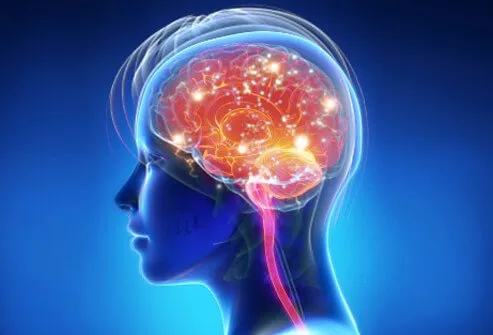
Addiction is a brain condition that results in craving, seeking, and using one or more substances, even though they are harmful. Physical dependence refers to a state where 1) more and more of a substance must be used to achieve a desired effect (tolerance) and 2) unpleasant symptoms occur when the dose of a substance is decreased or stopped altogether (withdrawal). Physical dependence is often part of addiction, but it's not required to develop an addiction. In fact, psychological addiction can endure long after the addicted individual has successfully been physically weaned from the drug.
Some substances are more addictive than others. Similarly, some people have more of a propensity for addiction than others.
Teen Alcohol Abuse
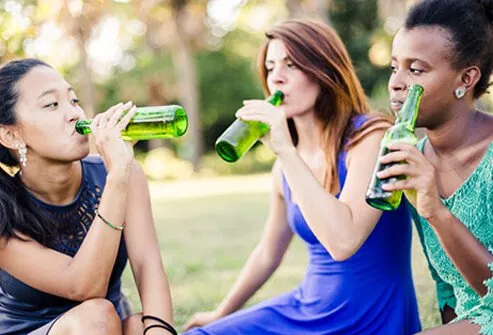
By the age of 18, more than 60% of teens admit to having had at least one drink. About 1 in 6 teens admits to binge drinking -- defined as having five or more drinks in a row within a couple of hours -- at least once per month. Teen alcohol use is associated with a higher risk of death and serious injuries. Teen alcohol use increases the risk of violence, unsafe sex, and other dangerous behaviors. Alcohol can also affect the brain development of a growing teen.
Marijuana

Marijuana is the most commonly abused illicit drug by teens. More than 2 in 5 high school students use pot at least once during any given month. Nearly 30% of teens have vaped marijuana. Marijuana use is on the rise, in part due to the mistaken belief that the drug is not dangerous. In the short term, marijuana impairs memory, perception, and judgment, all of which can contribute to the person engaging in risky behavior.
Long-term use of marijuana is known to decrease motivation, as well as impair brain and sexual function. Teens use marijuana to feel relaxed and euphoric, but it can also increase heart rate and induce anxiety, or even psychosis.
Street Names for Marijuana
On the street, marijuana is referred to as ganja, grass, herb, chronic, dope, Mary Jane, reefer, pot, sinsemilla, weed, and skunk. Often, preparations that have a higher content of THC are referred to as hash or hashish, oils, and wax.
Teen Tobacco Use
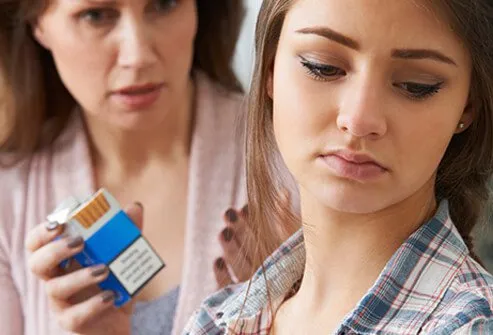
After seeing a large decline in teen cigarette use, American teens now use electronic cigarettes (E-cigarettes) at a higher rate than they once smoked cigarettes. About 5% of high school students smoke cigarettes, while nearly 20% smoke e-cigarettes in a given month. Smokeless tobacco has declined in popularity and now around 3% of teens admit to using it. Overall, nearly 1 in 4 teens uses tobacco in some form. Nicotine in tobacco products is highly addictive.
Common street names for cigarettes include cigs, smokes, singles or butts. Smokeless tobacco is often referred to as snuff, chew, or snus.
Teen Prescription Drug Abuse
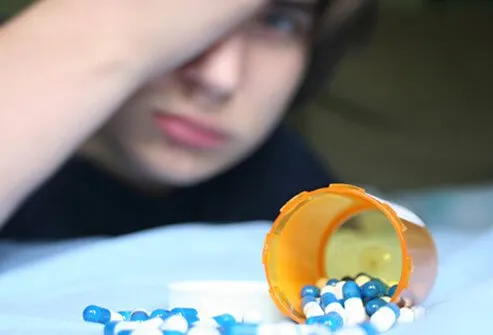
After marijuana, tobacco, and alcohol, prescription medications are the substances most commonly abused by teens. Tranquilizers and sedatives (Xanax, Klonopin, Valium), ADHD medication (Adderall, Ritalin, Concerta), and opioid pain killers (Vicodin, OxyContin, Percocet, Percodan) are the prescription medications abused most frequently by teens. It's a common misperception that abusing prescription drugs is safer than taking street drugs. That's not true. Abusing prescription medication can be very dangerous and even deadly.
Prescription Drug Street Names
- Tranquilizers and sedatives may go by the street names barbs, reds, red birds, yellows, yellow jackets, candy, sleeping pills, tranks, zombie pills, downers, phennies, tooies, forget-me pill, and Mexican Valium.
- Common street names for ADHD medications include the smart drug, vitamin R, R ball, skippy, uppers, bennies, and hearts.
- Street names for opioid pain killers include oxy, percs, happy pills, oxycotton, vike, juice, smack, and demmies.
Teen Over-the-Counter (OTC) Drug Abuse
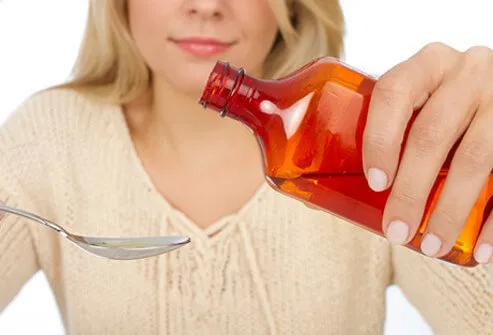
Over-the-counter (OTC) cough and cold medicine is commonly abused by teens. About 5% of eighth-grade students admit to abusing cough and cold medicine in the past year. Dextromethorphan (DXM), the active ingredient in these medications, causes excitability, hallucinations, and delusions. It also increases heart rate and blood pressure. It can cause confusion and dizziness. Common street names for dextromethorphan include Robo, triple C, and poor man's PCP.
Teen Street Drug Abuse

Marijuana is, by far, the most common illegal street drug abused by teens. In one recent survey, high school seniors admitted to abusing hallucinogens (7.5%), ecstasy (3.5%), cocaine (4%), as well as methamphetamine, ketamine, salvia, and inhalants (all around 2% or less) in the past year. Use of illegal drugs can have dangerous, even deadly, consequences.
Common Street Drug Names
- Street names for MDMA (3,4-methylenedioxymethamphetamine) include ecstasy, Molly, Adam, Eve, peace, love drug, X, E, and XTC.
- Cocaine is known as coke, C, crack, blow, bump, Charlie, rock, and snow.
- Bath salts are called vanilla sky, white lightening, bloom, or cloud nine.
- PCP (phencyclidine) is also called Angel Dust, boat, love boat and lovely.
- Methamphetamine (meth) goes by speed, ice, crystal, fire, and crank.
- Heroin may be called smack, ska, H, horse, and black tar.
Inhalants

Teens sometimes inhale chemical fumes from paint, gas, cleaning liquids, or glue to get high. In one recent study, about 2% of high school seniors admitted to abusing inhalants in the previous year. The rate of inhalant use tends to be much higher in preteens and younger teens, though. That difference is thought to be due to the higher accessibility to inhalants compared to other drugs for younger teens. More than 12% of 8th graders in the last year admitted to use of inhalants.
Many teens incorrectly assume sniffing inhalants isn't dangerous. Using inhalants can cause serious, irreversible brain damage, and even death. Long-term use of inhalants can break down myelin, the tissue that protects nerve cells. This can lead to tremors and muscle spasms similar to those seen in multiple sclerosis.
Street names for inhalants include whippets, snappers, laughing gas, rush, and bold.
Teen Drug Abuse: Symptoms and Signs

Certain warning signs may help parents, teachers, family, and friends determine if a teen has a substance abuse problem. Changes in personality and sleep habits may offer clues. Trouble at school, significant change in groups of friends, and failing grades may be other signs. A teen who is argumentative, often lies, is withdrawn, or breaks the law or rules at home or school may have a problem. Red, bloodshot eyes, fatigue, depression, poor health, lack of interest, and changes in grooming, dressing, or appearance may all point to drug use.
Teen Drug Abuse Treatment

Successful treatment for alcohol or drug abuse most commonly involves a combination of behavioral therapy (counseling) and pharmacological intervention. A teen in treatment may undergo individual, group, or family counseling. First, often the teen undergoes a process of detoxification ("detox") to eliminate the abused substance from the body. Certain medications may be prescribed to minimize withdrawal symptoms and decrease cravings. It is important to treat any other mental health condition that the teen is suffering from (e.g. depression, anxiety, bipolar disorder) in addition to directly addressing the addiction in order for treatment to be the most successful.
Teen Drug Abuse Treatment Referral

The Substance Abuse and Mental Health Services Administration (SAMHSA) offers a Behavioral Health Treatment Facility Locator to help you find alcohol and substance abuse treatment facilities in your area.
You can also call the SAMHSA Helpline at 1-800-662-HELP (4357) or the National Council on Alcoholism and Drug Dependence at 1-800-NCA-CALL.
You can reach the Suicide Prevention Lifeline for suicide prevention and other problems such as alcohol and substance abuse. The phone number is 1-800-273-TALK (8255).
Teen Drug Abuse Prevention

Parents can help prevent teen drug abuse by speaking to their children about the dangers of drugs and alcohol. Children whose parents speak to them about the risks of substance abuse and parents who tell their children their expectations are that drugs are not to be used are 50% less likely to use than children whose parents never address the topic.
More than 50% of prescription medications that people abuse are obtained from a friend or relative. Never give your prescription medication to anyone else. Let teens know it's not safe to take another person's prescription medication. Secure prescription medications at home and discard any extra medication no longer being used to lower the risk of misuse and abuse by others.
Teen Drug Abuse: Warning Signs, Statistics, and Facts
This tool does not provide medical advice. See additional information: 
© 1996-2024 WebMD, LLC. All rights reserved.
